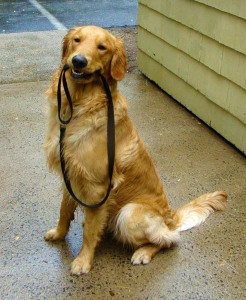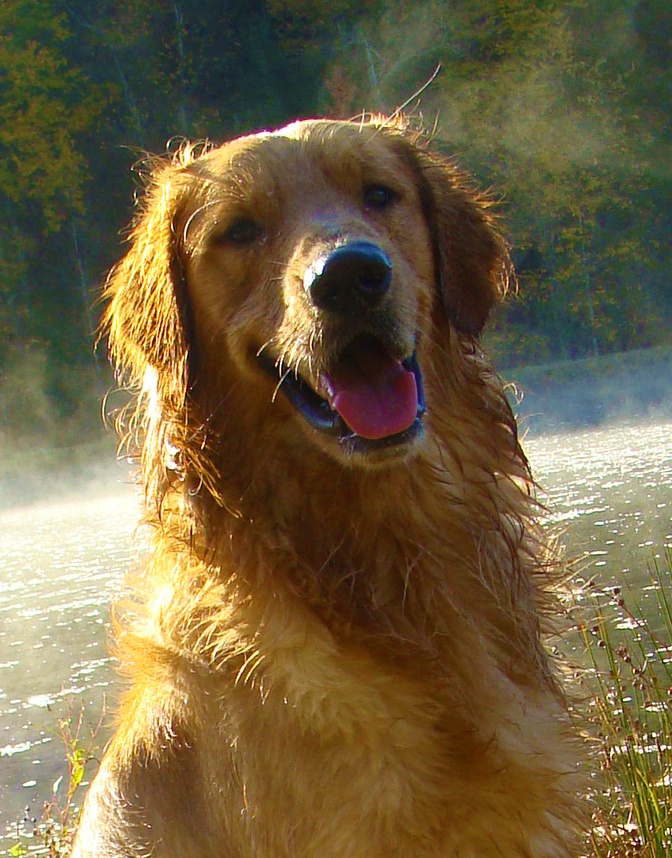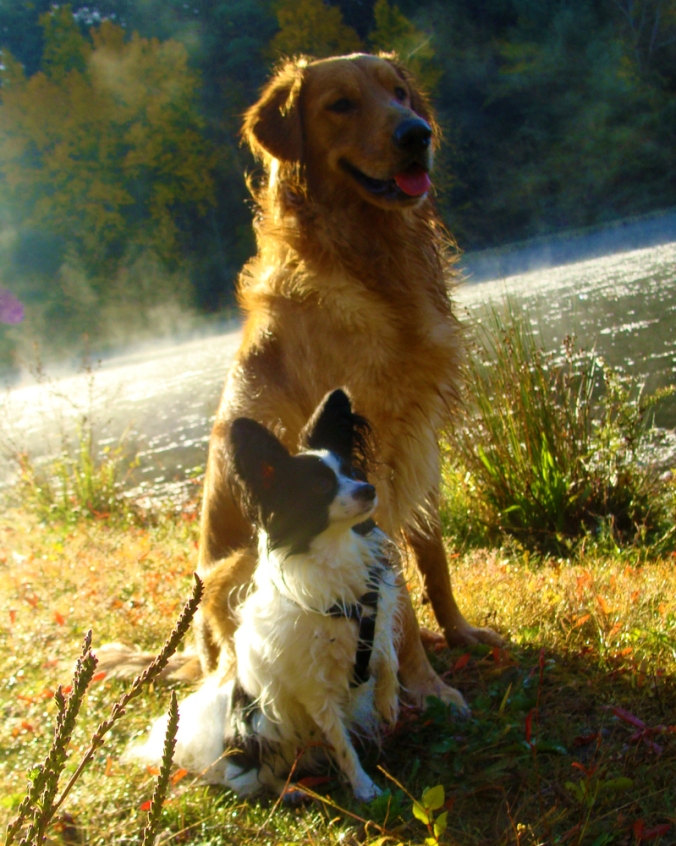Teaching Bradley to retrieve is like teaching water to be wet; retrieving is just what he does. There are plenty of retrieving skills I could incorporate into his training, but there are few I really need. There are two skills I do need him to use that involve retrieving, and he mastered one of them tonight.
The first is picking up a dropped object. This isn’t because I’m physically unable to pick it up, but because most of the time, I won’t see where the object fell. He’s got this down, for the most part. This skill could use some more proofing but nothing serious. If I wanted to demonstrate it for someone, I’d feel confident doing so.
The second task is more important to me: a blind retrieve. This is the task he mastered for the first time tonight. Not only did I ask him to retrieve my phone for me, but I first asked him to find the phone. I didn’t know where it was and he didn’t know where it was, so it was more than a matter of sending him to the object. He had to maintain concentration on a goal: finding the phone.
Since retrieving comes so easily to him, I didn’t have to do very much training for this skill. It was just a variation of what he already knows how to do. I started building up to this point yesterday, by showing him my phone, putting it down where he could see it and asking him to get it. Next, I put the phone where he couldn’t see it, like on the kitchen counter, and asked him to get it. I’d indicate the general area where the phone was, and he’d quickly find it. Realizing how easy this was for him, I took a leap of faith and decided to move onto the final product.
I was sitting down in a room that I knew the phone was not in but beyond that, I had no idea where it was. Bradley was in the room with me and I said, “Go find my phone.” I wasn’t completely sure he’d succeed, so it was a risky move.
Bradley is most accustomed to retrieving toys. Since it’s pretty much all he does all day, every day, it’s not surprising that his first inclination is to associate retrieving with play time. Each time I’ve asked him to find the phone without him knowing where it was from the get-go, his initial reaction was to retrieve a toy. When he does that, I gently tell him, “not that” and he drops the toy, continuing the search for the phone.
As I sat in suspense, hoping he’d come back with the phone, I heard his stuffed duck toy quack. I laughed in my head, still hoping for success. A couple moments later, he proudly trotted into the room with my phone is his mouth! I’m so proud of him!
This skill still needs a good deal of proofing. I need him to go directly for the phone more often, and not go for a toy first. Once he reliably retrieves the phone on the first try, I’ll start teaching him the names of new objects I need him to retrieve, like my keys, my purse, his leash, etc.
While this skill needs a little bit of cleaning up, that’s OK. This is still a huge success. Searching for something without my help is something completely new to him and certainly is one of the most important elements of guide work.
Eventually, I’ll ask him to find things and take me to them. He’ll have to find the car we came in, the person we came with, the door we came in through and an empty seat in a crowded movie theater or auditorium. I’m even more confident in his ability to actively search for and differentiate between things than I was before he mastered this simple, yet significant skill.
On a side note, Bradley deserves an extra pat on the back for making my life a little easier today. I made the brave decision to walk Bradley and Lex together this afternoon. Bradley walks very well on leash, but Lex is all over the place. Keeping Lex from getting underfoot (mine or Bradley’s) while holding onto Bradley’s leash takes concentration. On the way back home, I had an extra item (read: back of poop) to hold onto. It was turning into quite the juggling act. I asked Bradley to carry his leash, which he does frequently. Bradley conveniently walked himself home, remaining in heel position, so I could handle Hurricane Lexington.

This is a picture of Bradley holding his leash, taken in May 2009.
Joe ended up pulling into the driveway just as I was approaching home and beeped at us. Once I got to the top of the hill, Bradley had to muster up every ounce of self control he had within himself not to run over to “Daddy.” Joe was amazed at the verbal control I had over him. I was pretty proud of Bradley myself!







